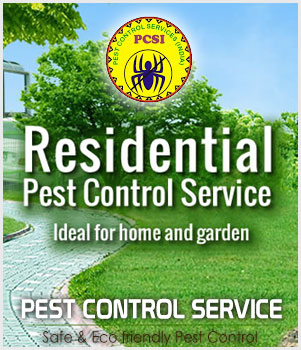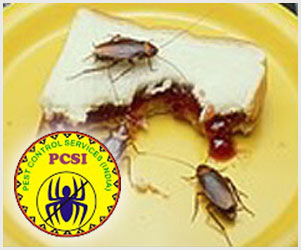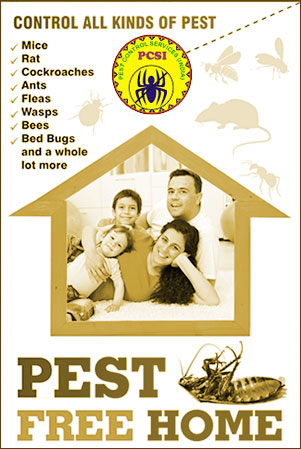
Ants
- Arboreal Bi-coloured
a.k.a Tetraponera rufonigra
Look: 10.5 -13 mm long, slender body. Head and abdomen black, rest of the body orange-red
About: Commonly found on and around coconut and mango trees. Nests in dead wood, rotten logs, wooden beams etc. Aggressive, has extremely painful sting.. - Black Crazy
a.k.a Paratrechina longicornis
Look: 2 - 3.5 mm long. Small, slender body, dark brown to black with a gray luster.
About: Commonly found in cracks, under bricks and soil of potted plants. - Common Ghost or Odour Ant
a.k.a Tapinoma melanocephalum
Look: 1.5 - 2 mm long. Black to dark brown head ,pale yellowish-white body.
About: Commonly found cracks in walls, between cabinets, soil of potted plants, cloth lining of instrument cases and even laptops. Eats insects, both dead and living, searches for sources of water. - Short-legged Hunchback
a.k.a Myrmicaria brunnea
Look: 5.5 - 8 mm long. Chestnut- red with black abdomen; pair of sharp spines.
About: Builds crater-like nests around the base of trees and in open ground.
Cockroaches
- American
a.k.a Periplaneta americana:
Look: 35-40 mm long, red to dark brown
About: Seen flying into homes. However, does not prefer living in homes, likes dark, moist and warms areas, such as drains and sewers. - Brown-banded
a.k.a Supella longipalpis
Look: 13 - 14.5 mm long, pale brown in colour.
About: Wasn't considered a significant pest in urban areas, however has started making appearances. - German
a.k.a Blatella germanica
Look: 12 - 15 mm long, yellowish brown with two dark brown vertical bands behind the head.
About: Commonly found in kitchens, especially in cracks and crevices It feeds on almost all kinds of food, and is usually found infesting.
Flies
- Blow or Bottle Fly
a.k.a Calliphoridae
Look: 7 - 9 mm long. Metallic blue or green thorax and abdomen.
About: These flies are essential in the decay process of animal carcasses and are usually the first insects to arrive - within hours or even minutes - after an animal dies. They are also called Blue or Green bottle flies because of their colour. - Common House
a.k.a Musca domestica
Look: 5 - 8mm long. Gray with four dark stripes on the thorax and yellowish-light brown abdomen.
About: Found all over the world. Commonly seen around garbage. High breeding rate, dwells on any kind of food. Its body body hairs makes it a very efficient carrier of disease causing organisms. - Fruit or Vinegar Fly
a.k.a Drosophila melanogaster
Look: 3 mm long. Light yellow to brown colour, with large, red eyes.
About: Generally in swarms, near decaying vegetation and garbage bins in kitchens
House Crickets
a.k.a Acheta domesticus
Look: 11-15 mm long. Alike grasshoppers, long antennae, gray/brown/black body, strong hind legs.
About: Found eating food lying around. They also nibble on damaged material such as wool, cotton, artificial silk fabric etc.. They tend to lie flat on the back, folded around the body.
Mosquitoes
- Asian Tiger or Yellow Fever
a.k.a Aedes Spp.
Look: 6.4 -12. 7 mm long. Black with striped white markings , thin, long-legged winged insect.
About: Only the adult female bites humans and other animals. Since, they need blood meals to produce eggs. Commonly found breeding, in stagnant water. Breeds in drains, pools, gutters, septic tanks, etc, in urban surroundings. It transmits Filaria. - House
a.k.a Armigeres Spp.
Look: 6. 4 – 12.7 mm long. Dark brown with white and black markings (Armigeres Spp.) thin, long-legged winged insect. Have long, slender legs, with an elongate "beak" or proboscis to pierce skin.
About: They generally bite during dusk and dawn. They breed in cracks or crevices, septic water tanks etc. - Malaria
a.k.a Anopheles Spp.
Look: 6. 4 - 12.7 mm. Long, brown slender winged insect.
About: Commonly found breeding in areas such as wells, fountains, curing water bodies in construction areas. Adult females bite during night. These mosquitoes transmit malaria.
Psocids or Booklice
a.k.a Liposcelis Spp
Look: Small, soft bodied, light brown, wingless.
About: Commonly found in damp places, such as old books. Libraries, warehouses, grain and flour mills, museums (herbaria, insect collections, manuscripts) and cardboard boxes are common dwellings.
 |
 |
 |

